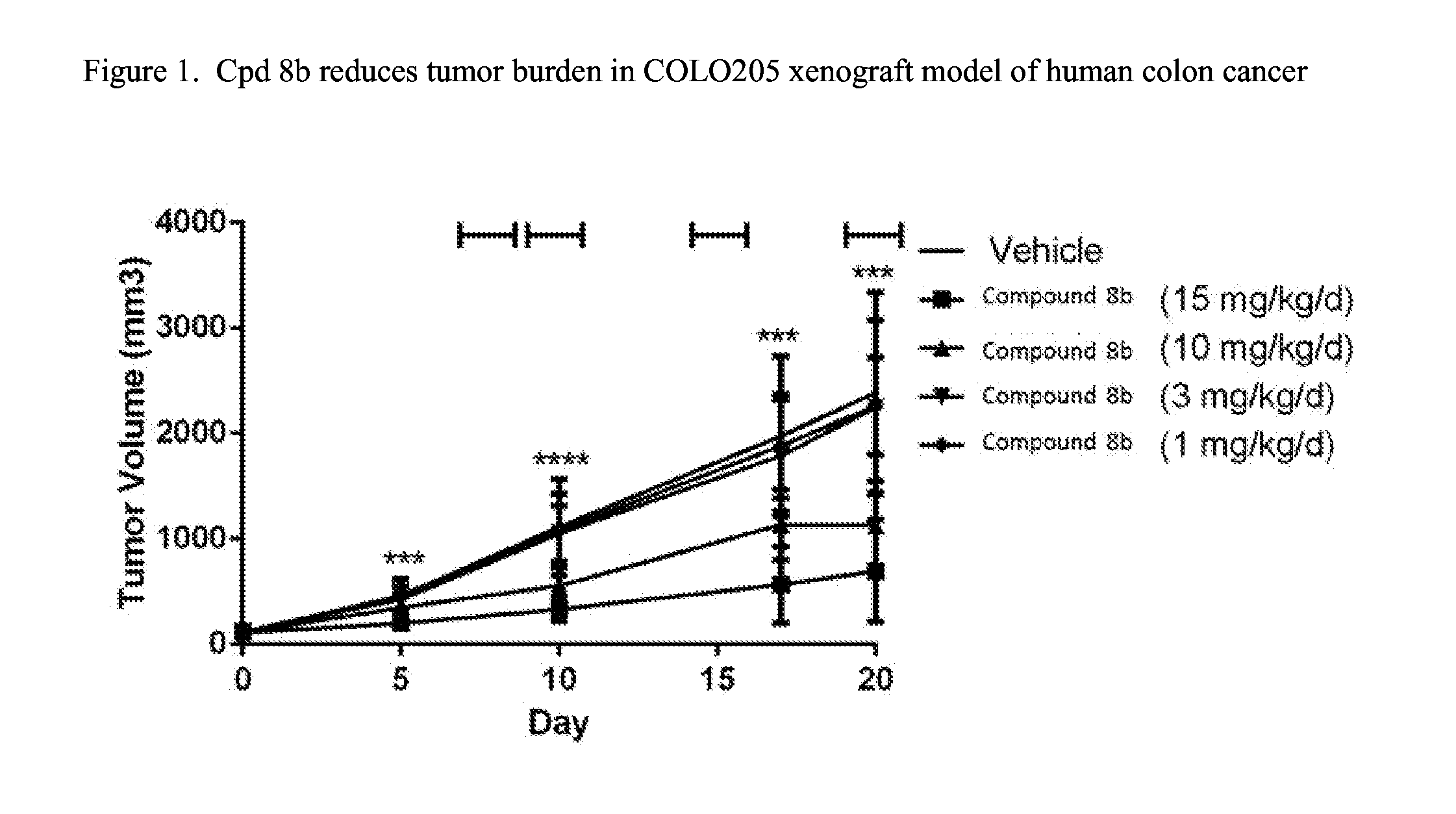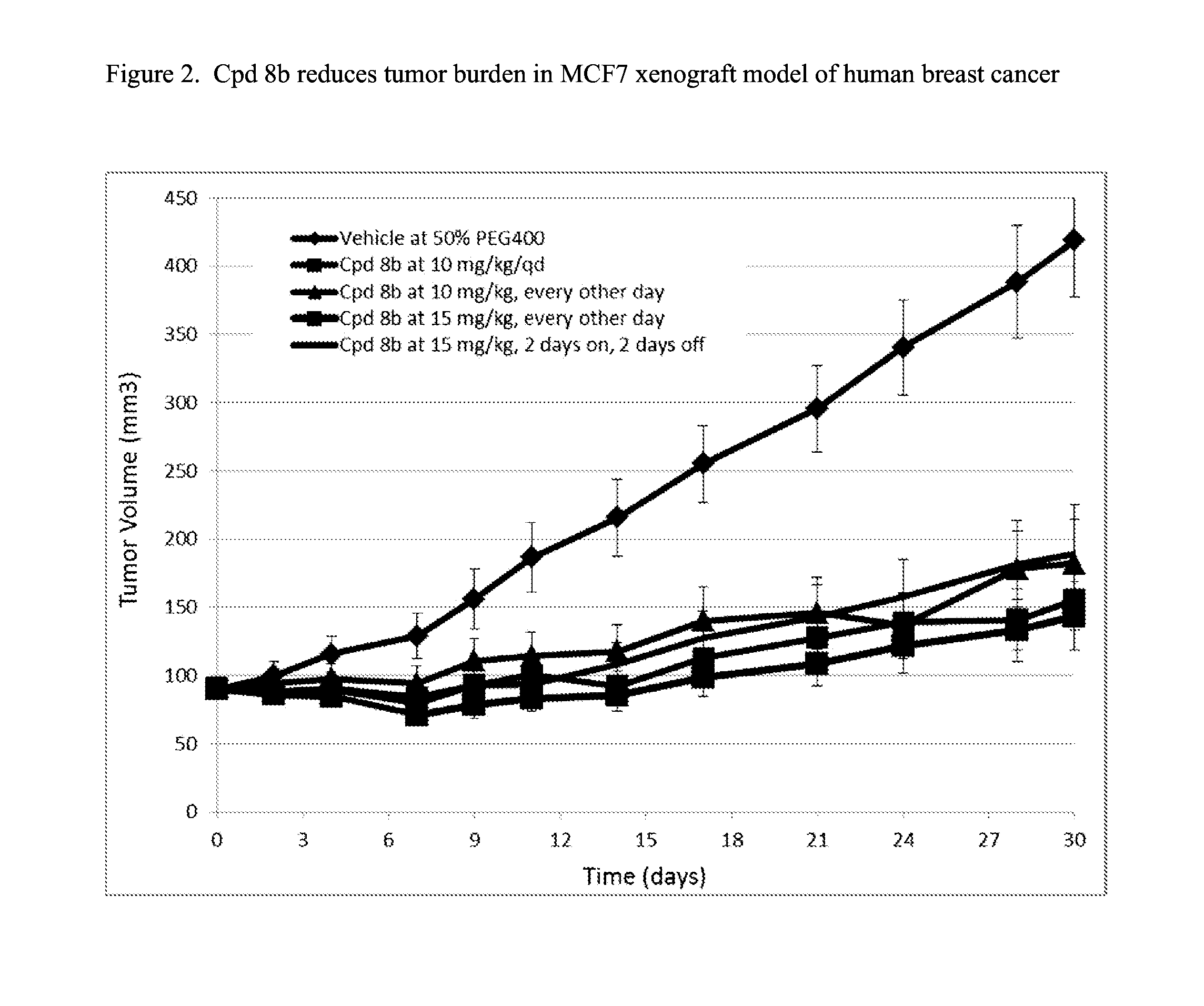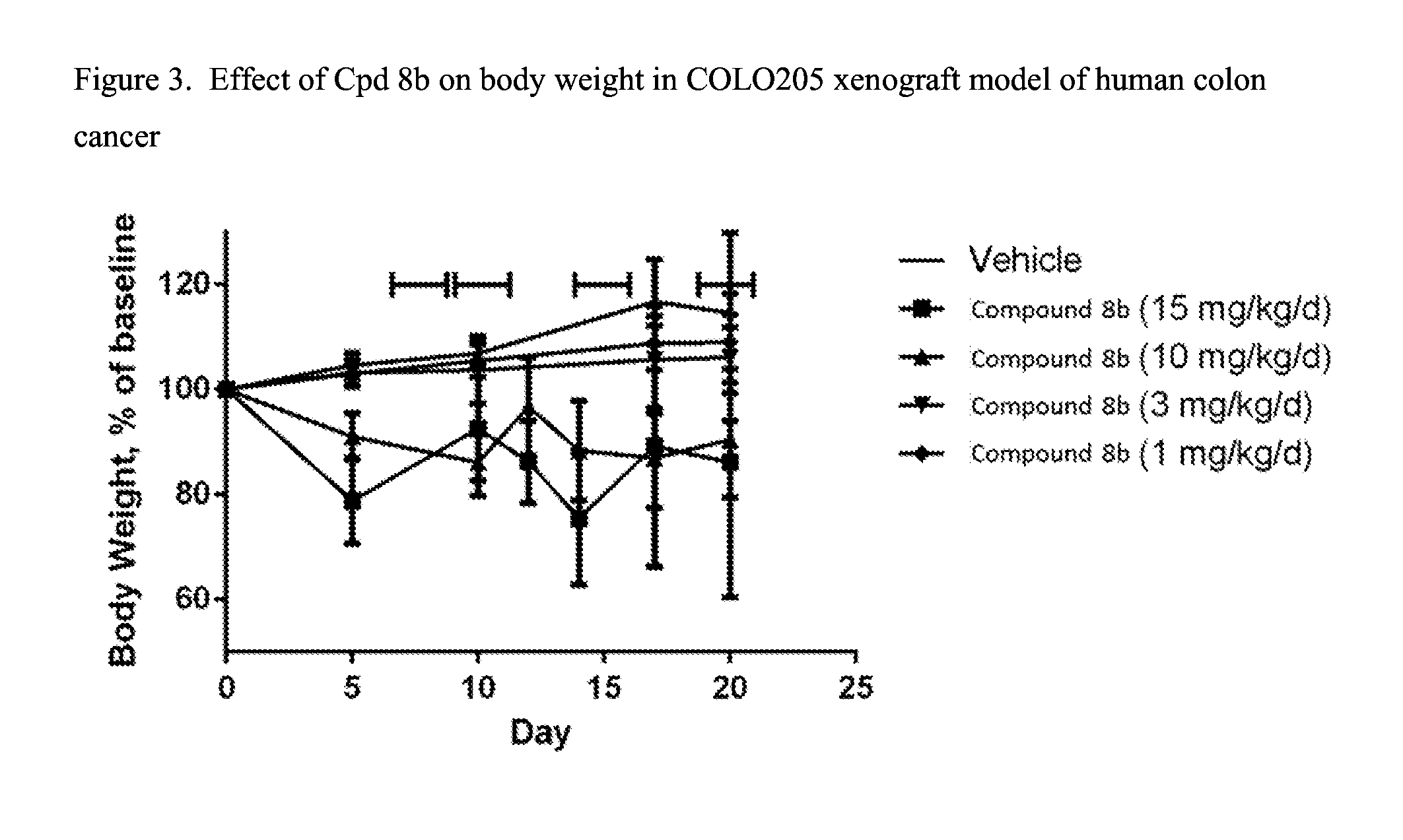Fused pyrimidine compounds and use thereof
- Summary
- Abstract
- Description
- Claims
- Application Information
AI Technical Summary
Benefits of technology
Problems solved by technology
Method used
Image
Examples
examples
[0817]The following Examples are provided to illustrate but not to limit the invention.
General Protocol for Chiral Preparative HPLC Separation of Racemic Compounds
[0818]For chiral separations, samples were dissolved in MeOH and EtOH according to the solubility of sample and filtered through 0.22μ PTFE filters. The columns used were CHIRALPAK-AD; 20*250 mm, 10μ and CHIRALCEL-ODH; 20*250 mm, 5μ. A flow rate of 12 mL / min-17 mL / min was used according to the resolution. Alkanes such as n-Pentane, Hexane and Heptane (40%-95%) and alcohols such as EtOH, Isopropyl alcohol and t-Butanol (5%-60%) were used as mobile phase. In some cases alcohol combinations i.e. (EtOH+MeOH), (EtOH+IPA), (IPA+MeOH), (t-Butanol+MeOH), (t-Butanol+EtOH) were used instead of a single alcohol. Diethyl amine (up to 0.3%) was used as modifier in the mobile phase.
example h1
General Method for the Chiral HPLC Separation and Characterization of Compounds that are Synthesized Initially as a Mixture of Enantiomers
[0819]Crude or in some cases partially purified (normal or reverse phase HPLC) mixtures of enantiomers are analyzed by analytical chiral HPLC methods. Once adequate separation is achieved, larger quantities of the mixtures are separated using preparative scale columns. Separation is followed by removal of solvents on a rotary evaporator to accomplish the isolation of the individual single enantiomers. In some cases where appropriate, after removal of solvent, the samples are lyophilized. After isolation, each individual enantiomer is further analyzed by analytical (reverse phase and chiral) HPLC, LCMS and NMR. When final products are converted to salts, final characterization of the compounds is carried out after conversion to the salt for each enantiomer.
Analytical Chiral HPLC of Compounds of the Invention.
[0820]Column: Chiralcel OD-H; Column ID:...
example h2
General Method for the Chiral HPLC Separation and Characterization of Compounds that are Synthesized Initially as a Mixture of Diastereomers
[0822]Crude or in some cases partially purified (normal or reverse phase HPLC) mixtures of diastereomers are analyzed by analytical chiral HPLC methods. Once adequate separation is achieved, larger quantities of the mixtures are separated using preparative scale columns. Separation is followed by removal of solvents on a rotary evaporator to accomplish the isolation of the individual single diastereomers. In some cases where appropriate, after removal of solvent, the samples are lyophilized. Once each individual diastereomer is isolated they are further analyzed by analytical (reverse phase and chiral) HPLC, LCMS and NMR. When final products are converted to salts, final characterization of the compounds is carried out after conversion to the salt for each diastereomer.
Analytical Chiral HPLC Data of Compounds of the Invention.
[0823]Column: Chira...
PUM
 Login to View More
Login to View More Abstract
Description
Claims
Application Information
 Login to View More
Login to View More - R&D
- Intellectual Property
- Life Sciences
- Materials
- Tech Scout
- Unparalleled Data Quality
- Higher Quality Content
- 60% Fewer Hallucinations
Browse by: Latest US Patents, China's latest patents, Technical Efficacy Thesaurus, Application Domain, Technology Topic, Popular Technical Reports.
© 2025 PatSnap. All rights reserved.Legal|Privacy policy|Modern Slavery Act Transparency Statement|Sitemap|About US| Contact US: help@patsnap.com



